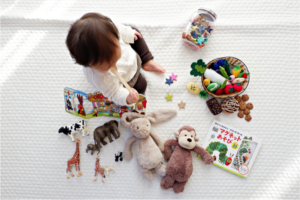RSV, Respiratory Syncytial Virus, takes its toll across the country in the winter and is worse some years than others. Next to the flu, RSV typically begins in the fall, peaks in the winter, and is spread through coughs and sneezes. It’s a cold weather disease to to be mindful of and protect yourself and you children from.
Each year, the Center for Disease Control estimates that RSV leads to approximately…
- 2.1 million outpatient (non-hospitalization) visits among children younger than 5 years old
- 58,000–80,000 hospitalizations among children younger than 5 years old.
- 100,000–150,000 hospitalizations among adults 60 years and older.
If you assumed from these statistics that this illness primarily affects the very young and the elderly, you would be correct. However, RSV can also affect even the most healthy adult.
Because you may have seniors, babies, and people of all ages visiting your facility, it’s worth taking a few minutes to learn about RSV in an effort to help keep them, employees and your business protected.
WHAT IS RSV?
RSV is an abbreviation for Respiratory Syncytial Virus. Babies and young children contract RSV at very high rates as outbreaks are very common in small group settings like classrooms and childcare facilities. By the time a child turns 2 years old, they will most likely have been infected at least once. Since RSV is a virus, antibiotics do not treat it.
RSV spreads quickly via bodily fluids and contaminated objects, similar to the flu. Air droplets from talking, coughing or sneezing are enough to spread the virus. RSV can live for hours and sometimes more than a day on hard surfaces. Given this, it’s easy to imagine how something as innocent as coughing and then touching a door handle or sneezing without covering your mouth could spark an outbreak. Secondary infections from RSV can also occur as a result of complications. These include pneumonia and middle ear infections, and even asthma, which can develop later in life.

SIGNS AND SYMPTOMS
When an individual contracts RSV, symptoms will appear between two and five days. In the case of babies and small children, RSV may appear to be a common cold at first. For children who are older, wheezing coughs may be the first indicator that something is wrong.
RSV quickly develops into an acute, painful, and miserable upper respiratory infection. Soon after, the virus can begin to look like the flu. Symptoms include a runny nose, high fever, coughing, trouble breathing, sore throat, loss of appetite or trouble drinking, rapid and shallow breathing, and overall malaise.
If symptoms don’t improve within a few days or if they get worse, or if new symptoms develop, it’s a good idea to seek medical attention. RSV can be a confusing virus because it mimics the symptoms of both the common cold and influenza while also leading to many secondary infections like ear infections, sinus infections, and pneumonia.
Diagnosing and treating it can be very difficult as the cold and flu are viruses that go away with proper care and rest, while secondary infections are generally bacterial and require medical attention. When in doubt, call your physician.

HOW DOES RSV SPREAD?
RSV typically spreads to babies and amongst kids because they may be more lax on hygiene practices than adults and older children. Because it can spread quickly from sharing toys and touching surfaces like desks and door handles, daycares and classrooms are ideal environments for RSV to spread. Something as simple as sneezing can cover a desk with germs that can live on it for hours, waiting to infect the next person.
Often, infected children will bring the virus home and share it with their parents. Worldwide, the World Health Organization has estimated that somewhere around 60,000 children under the age of 5 die because of RSV. For tips on how to sanitize and disinfect toys in your childcare or daycare facility, click here.

ERADICATING RSV IN YOUR FACILITY
The last thing you want this year is for someone to contract RSV at your facility. Whatever the level of annual infection, being linked to an RSV outbreak can be bad for business.
One simple step to get ahead of this quick-spreading virus is to set up a strategic cleaning schedule focused on sanitizing and disinfecting. If your facility sees many young children or elderly people visiting then this is extra crucial for you. These people are at the highest risk of contracting RSV and diligent, consistent cleaning is the best way to keep it from spreading.
Lastly, be sure to use EPA registered disinfectant wipes to destroy the RSV virus on surfaces in your facility. Be sure your disinfectant label has RSV listed as a pathogen it kills.
SIMPLE PREVENTION TIPS
If you are sick, stay home. Do not spend time around children or the elderly. If your children are infected keep them at home, too. This simple step will give you the time to heal while preventing spreading the disease to others. Don’t return to work or school, or go out to public places like the grocery store until you’ve been recovered for at least 24-hours.
Wash hands. Don’t forget that good hygiene is the golden rule for a healthy life. Make a habit of washing your hands well after you use the restroom, when you cough or sneeze, before and after you eat, and even when you get home from being in a public place.
Use hand sanitizing wipes. Use hand sanitizing wipes after you touch door handles and shared surfaces like reception desks, elevator buttons, and communal tables. Remember that covering your mouth when you cough or sneeze can help prevent the spread of viruses significantly as they can spread up to six feet from an infected person through airborne water droplets alone.

Leave a Reply